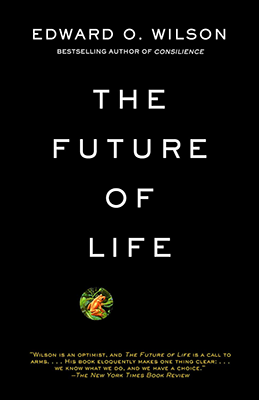The Future Of Life
“The Future of Life” by E.O. Wilson is a seminal work that explores the current state of biodiversity on Earth and outlines strategies for preserving and protecting it for future generations. Here’s a summary:
Introduction to Biodiversity: Wilson introduces the concept of biodiversity, which refers to the variety of life forms on Earth, including plants, animals, fungi, and microorganisms. He discusses the importance of biodiversity for ecosystem health, human well-being, and the stability of the planet’s climate.
Threats to Biodiversity: Wilson explores the major threats facing biodiversity today, including habitat destruction, climate change, pollution, overexploitation of natural resources, and the spread of invasive species. He discusses how these threats are driving a global decline in biodiversity and leading to the loss of species at an unprecedented rate.
The Importance of Ecosystem Services: Wilson discusses the vital role that ecosystems play in providing essential services to human societies, such as clean air and water, fertile soil, pollination, and climate regulation. He emphasizes the economic and ecological value of these services and the need to protect them for future generations.
Conservation Biology: Wilson introduces the field of conservation biology, which seeks to understand and address the causes of biodiversity loss and develop strategies for protecting and restoring ecosystems. He discusses the principles of conservation biology, including the importance of preserving biodiversity hotspots, protecting keystone species, and establishing protected areas.
Biodiversity Hotspots: Wilson highlights the importance of biodiversity hotspots, which are regions with exceptionally high levels of species diversity and endemism. He discusses the importance of prioritizing conservation efforts in these areas to maximize the impact of limited resources.
The Role of Science and Technology: Wilson discusses the role of science and technology in conservation efforts, including the use of genetic tools, satellite imagery, and computer modeling to monitor and manage ecosystems. He emphasizes the importance of interdisciplinary collaboration and public engagement in addressing the challenges of biodiversity conservation.
Policy and Advocacy: Wilson explores the role of policy and advocacy in promoting biodiversity conservation. He discusses the need for stronger environmental regulations, international cooperation, and public awareness campaigns to address the root causes of biodiversity loss and promote sustainable development.
The Future of Life on Earth: Wilson concludes by reflecting on the future of life on Earth and the choices that humanity must make to ensure a sustainable and thriving planet for future generations. He emphasizes the importance of taking urgent action to protect biodiversity and preserve the natural world for the benefit of all species.
Overall, “The Future of Life” offers a compelling and urgent call to action to address the global biodiversity crisis. Wilson’s impassioned plea for conservation and sustainability resonates throughout the book, inspiring readers to become advocates for the preservation of life on Earth.

